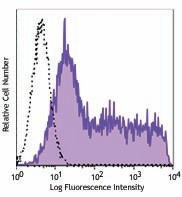A comprehensive study of the genomes and transcriptomes of HEK 2and five derivative cell lines compared the HEK 2transcriptome with that of human kidney, adrenal, pituitary and central nervous tissue. The HEK 2pattern most closely resembled that of adrenal cells , which have many neuronal properties. Diameter of Human Pulmonary Artery Endothelial (HPAEC) cell. Size of U2(peripheral bloo multiple myeloma) cell. HEK 2cells are efficiently transfected with LipofectAMINE, with typically of cells showing fluorescence following transfection with green fluorescent protein (GFP).

Prior to transfection, HEK 2cells are preincubated with serum-free DMEM medium for h. T (or HEK 293T) is a human cell line, derived from the HEK 2cell line, that expresses a mutant version of the SVlarge T antigen. HEK-2cells are useful for many transfection experiments, particularly the propagation of adenoviral-based and retroviral-based vectors. Note: To avoid clumping do not agitate the cells by hitting or shaking the flask while waiting for the cells to detach. To put these cellular sizes in perspective, if we think of E. HeLa cell is about the size of a blue whale.
Our examination of the sizes of different cell types will serve as a jumping off point for developing intuition for a variety of other biological numbers we will encounter throughout the. Spezifisch wurden Kilobasen des viralen Genoms in das Erbgut der Nierenzelle eingebaut. HEK29 or HEK cells , are a cell line from human embryonic kidney. T can also be used to produce lentiviral and retroviral vectors.

HEK 2cell , the Human Embryonic Kidney 2cells was originally derived from human embryonic kidney cells grown in tissue culture. The HEK cell line has been extensively used as an expression tool for recombinant proteins since it was generated over years ago. Although of epithelial origin, its biochemical machinery is capable of carrying out most of the post-translational folding and processing required to generate functional, mature protein from a wide spectrum of both mammalian and non-mammalian nucleic acids.
After over a decade of seeding small(er) scale 293T fresh from ATCC I can say with confidence. Author information: (1)Department of Pharmacology, University College London, Gower Street, London, WC1E 6BT, UK. There are various sizes of dishes and flasks used for cell culture. Some useful numbers such as surface area and volumes of dissociation solutions are given below for various size culture vessels.

HEK2cell line: a vehicle for the expression of recombinant proteins. ADVERTISEMENTS: In this article we will discuss about the functions, size and shape of a cell. Functions of Cell : The description of different cellular components may lead to this erroneous idea that each component probably carries its activity independently. Determine cell number using a hemacytometer. Pellet cells at 5× g for minutes at 18°C.
Transfer cell suspension to a conical tube. Aspirate the supernatant and resuspend cells in Growth Medium. Seed new flasks at appropriate cell density depending on the size of flask. For example, use × 10^cells for a Tflask.
The human embryonic kidney 2( HEK -293) cells are commonly used as host for the heterologous expression of membrane proteins not least because they have a high transfection efficiency and faithfully translate and process proteins. In addition, their cell size , morphology and division rate, and low expression of native channels are traits that are particularly attractive for current-voltage. They are therefore used for virology studies and transfected to express recombinant proteins for.
The are similar to what was achieved in the shake flask cultures. Harvest cells and media by tapping the sides of the CFon a soft surface. Cells should detach easily. Centrifuge at 0g for min at ℃ to pellet the cells. The size and shape of a cell are related to its function and are governed by four factors—(1) surface-volume ratio, (2) nucleocytoplasmic ratio, (3) rate of cellular activity, (4) cell associations.
Als CHO-Zellen, abgekürzt von englisch Chinese Hamster Ovary, wird eine immortalisierte Zelllinie aus Ovarien des Chinesischen Zwerghamsters (Cricetulus griseus) bezeichnet, die in der Zellbiologie und Biotechnologie zur Produktion von rekombinanten Proteinen Verwendung findet.
Keine Kommentare:
Kommentar veröffentlichen
Hinweis: Nur ein Mitglied dieses Blogs kann Kommentare posten.